We use affiliate links to run our site. When you buy through links on our site, we may earn an affiliate commission, without any added cost to you. Learn more
Growing plants in containers is a great way to add color and beauty to your home. This is an especially good choice if you have limited space. There are many types of planters available for growing plants. The design and shape of these plant containers are crucial in making your garden beautiful and colorful.
This article is a part of our container gardening series. Here I will discuss different types of plant containers that you can use to grow plants. So if you are thinking lately about which plant pots are best for your garden read on to clear your doubts.
When we talk about container gardening, the most important word is the container or the planter. Many people have asked me in the past about the planters.
What material is good for the plants? Is it necessary to plant in earthy pots only? Can we plant in metal containers? So I have decided to write an article about the various containers which you can use for planting.
First, let’s check what are the different materials suitable for growing plants.
Best Plant Containers For Growing Plants
Following are some of the various materials used for making the containers that we use in container gardening.
- Terracotta Planters
- Plastic Pots
- Wooden Planters
- Fabric pots
- Concrete containers
- Metallic Pots
- Biodegradable pots
Terracotta Planters:
A terracotta pot is a type of clay container made from baked clay. Growing plants in terracotta pots are quite popular among gardeners and it is also a natural way to grow plants. Unlike plastic pots they are quite sturdy and don’t tip over; however, they break easily.
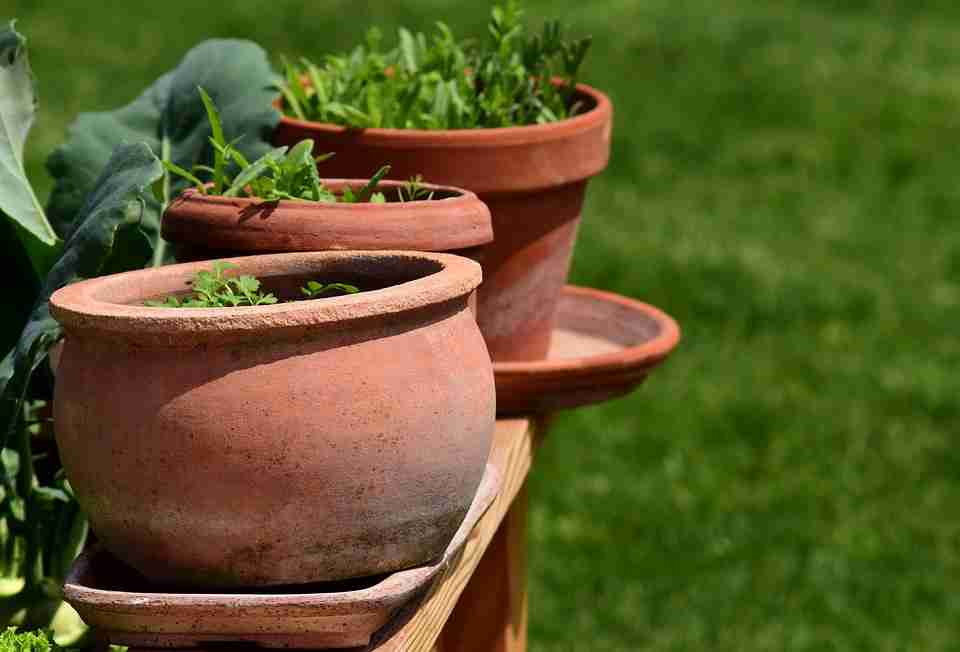
The main benefits of using terracotta containers are:
- The porosity of the material helps the excess moisture to evaporate and allows plant roots to breathe.
- Their earthy looks make them suitable for almost any garden. They add warmth to your garden on cool evenings.
- Terracotta planters are also good value for money.
- You will find different shapes and sizes of terracotta pots at reasonable prices.
- Although the reddish-orange color is the most common, terracotta pots can be found in many colors and textures.
Some of the major disadvantages of terracotta pots are:
- They are quite heavy, even without any soil of potting mix. So moving them around can be challenging especially if you have large pots.
- Terracotta also tends to draw moisture from the potting mix, so you have to water your plants [link] more frequently.
- Due to its porous nature nutrients can also leach through the containers, and over time your beautiful looking terracotta plants may look discolored.
To make their water retention capacity better, the unglazed side of the pots is sometimes fired with a glass-like coating to increase the water retention capacity of the pots. These containers can hold moisture better than the normal unglazed ones. Your drought-tolerant plants will also do pretty well in terracotta pots.
Plastic Pots:
Plastic pots are very common these days.
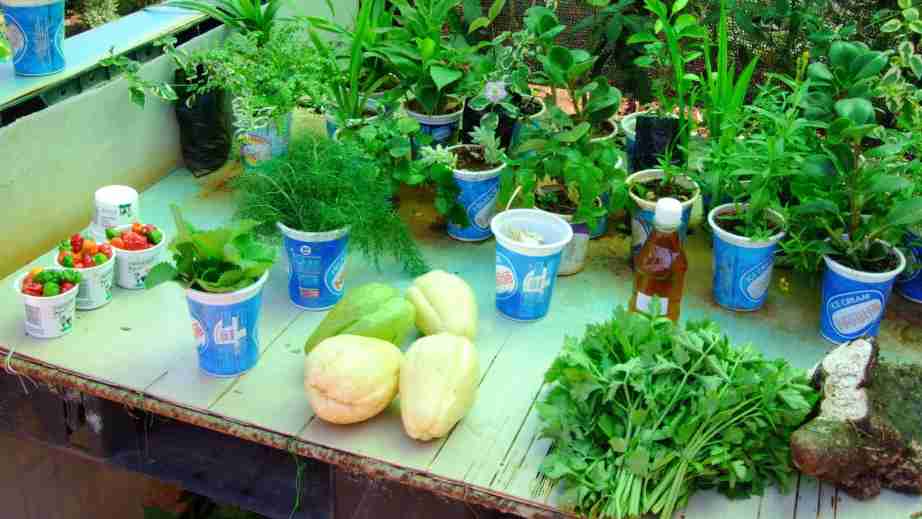
Some of the major benefits of using plastic pots are:
- Plastic pots are cheap, available in many colors, shapes, and sizes, and are also very lightweight.
- They are clean and non-porous and easy to move from one place to another.
- They have an edge as compared to terracotta pots as they do not absorb moisture from the soil and hence there is no need for constant watering.
- Unlike a terracotta pot, plastic pots will not break easily.
- Plastic containers are easily available. You can also use your old bottles to plant.
Disadvantages of plastic planters:
- Being very lightweight a plastic pot can easily tip over.
- They heat up too much, this can result in dry potting mixes around the sides.
- Might not look good aesthetically.
- They are not environment friendly.
Wooden Containers:
Unlike most other containers, wooden planters don’t heat up very quickly. So you can easily put them on balconies and decks. Window boxes are the most common area where you will find wooden planters in action.
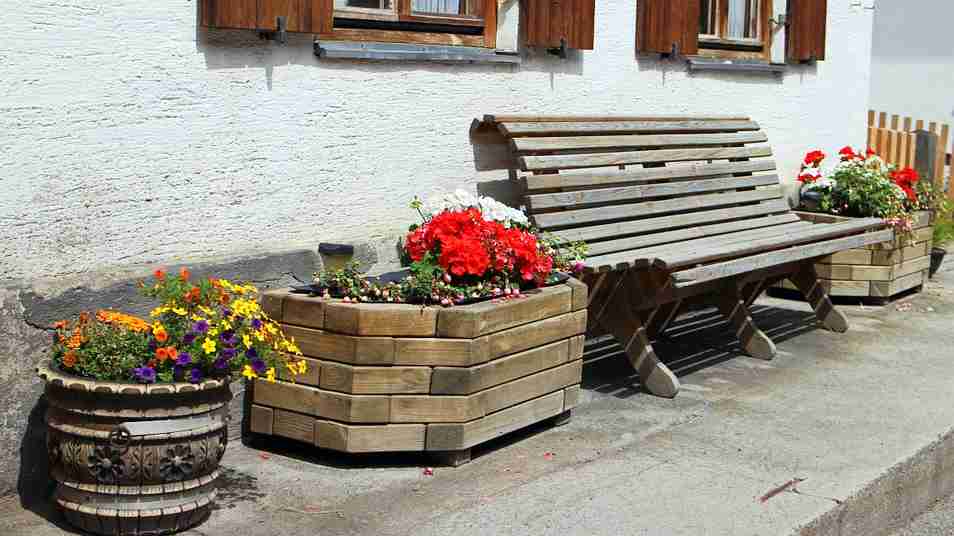
Weight-wise they are heavier than plastic pots but are much lighter than terracotta or concrete planters. Wooden planters also come in many different shapes (square, rectangle, or circular base) and sizes (from 4 inches to 24 inches in depth).
These containers can hold a large amount of potting soil. This can act both as an advantage as well as a downside. Plants and veggies that you grow in wooden containers are often healthier than the plants in other containers. But they are not easily portable.
Place them at their final location—before you fill soil and plant. Once they’re full, you won’t want to move them. Pots made up of rot-resistant redwood or cedar can be useful for planting.
They provide very good insulation from the weather outside. To prevent the pots from rotting you can also add some sand (at least an inch deep) at the bottom of the container and then put the soil.
Fabric Container:
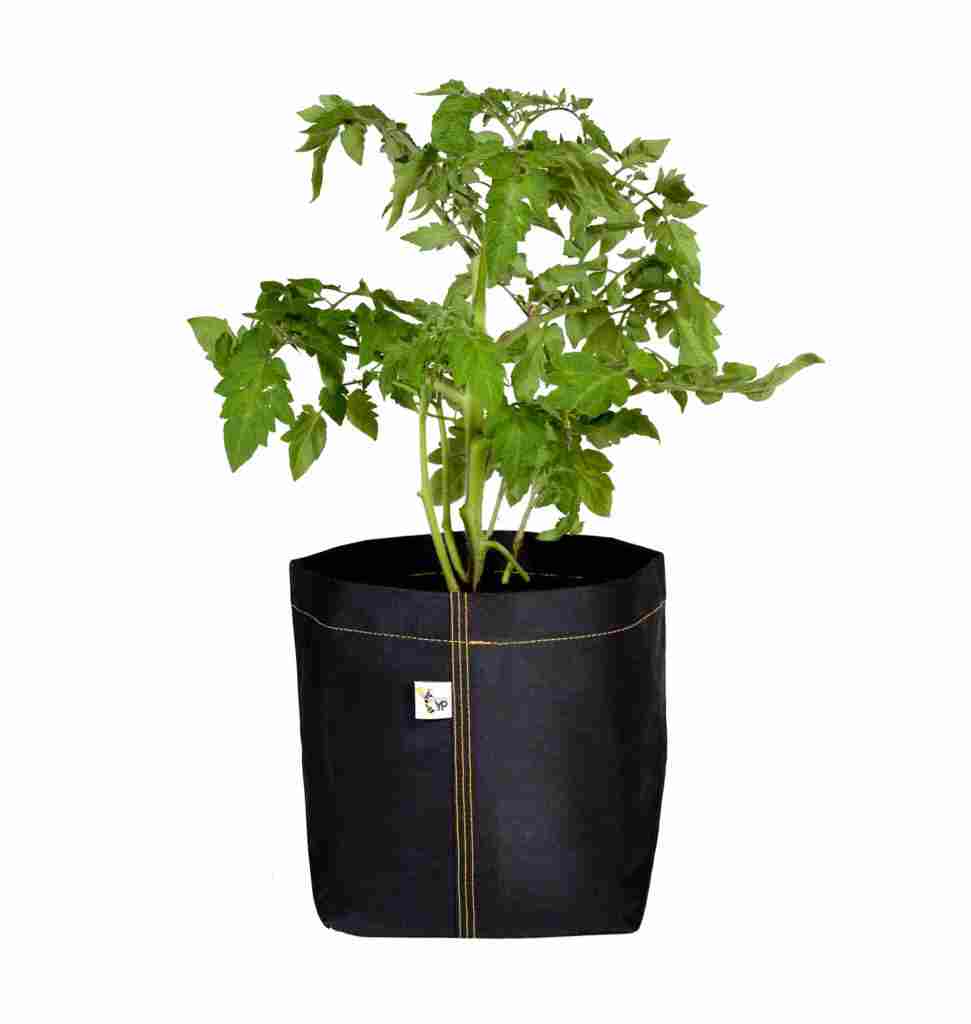
Fabric pots are the ultimate portable containers. You can use these pots to grow plants indoors as well as outdoors. They are lightweight, portable, easy to carry, cheap, and can be easily cleaned. Fabric pots mainly come in cylindrical shapes and in many sizes.
Here are some of the advantages of fabric pots over others:
- Being porous they allow air circulation to the soil and roots.
- They are easy to move and are ideal for places like balconies.
- They don’t heat up like metal or plastic pots but dissipate heat.
Drawbacks of using fabric pots:
As fabric pots allow great aeration and temperature control, the soil in the pot can dry out pretty quickly. So check the soil moisture regularly and water accordingly.
Concrete Containers:
Concrete is a natural choice for planters. Not only does it blend into an outdoor environment, but it’s also a great insulator for plants, especially if you live in an area with extreme weather conditions.
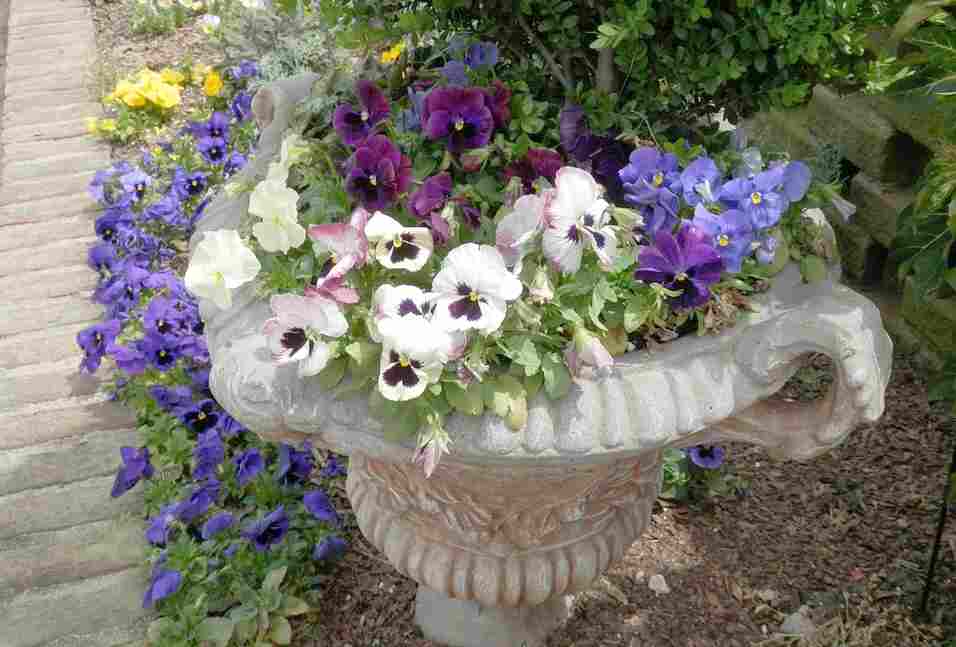
The main advantages of concrete planters are:
- They are highly durable and if you want to set up a permanent fixture in your garden then concrete planters are for you.
- Concrete is frost proof and you don’t have to worry about beaking the planter.
- These pots can be very heavy so they are a good choice for windy areas.
But there are some drawbacks also:
- Being heavy means it will be harder to move from one place to another.
- Not an ideal choice for rooftop gardens or balconies.
You can prepare concrete pots of your own or buy them online.
Metal Planters:
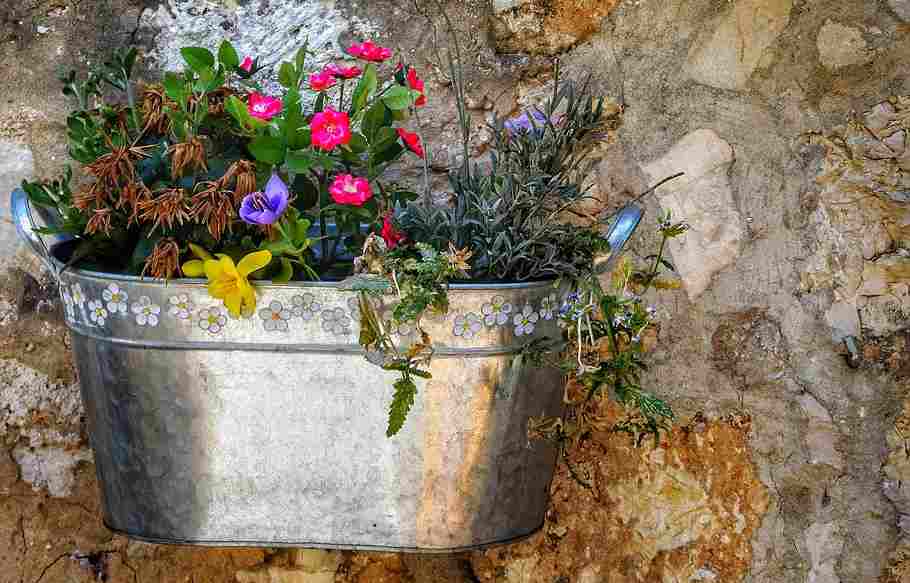
Metal pots come in a variety of styles including modern and traditional metal pots. using metal pots can elevate the aesthetic appeal of the space effortlessly.
Although steel and aluminum are the most common materials, metal pots are also available in brass, copper, etc.
Advantages of metal pots in your garden:
- They are incredibly hard-wearing, and can happily withstand the harshest weather conditions.
- Metal planters are long-lasting pots with a little bit of care the luster can last a long, long time.
- They’re available in a variety of sizes and shapes, so you can choose one that will fit in well with your decorating theme.
- Metal pots can be very lightweight and can add a great look to your patio or indoor garden.
Major drawbacks of metal planters:
- It is also not easy to make a drainage hole in the metal containers. So make sure you buy planters with pre-built drainage holes.
- Metal planters can get searingly hot in the glaring sun. It can burn your plants, dry out the soil, and increase the chance of root damage. Keep your planters far from direct sunlight.
- Although they can increase the aesthetic look of your garden, they are relatively expensive than other planters.
Check out this beautiful metal planter on Amazon
Biodegradable Pots for Growing Plants:
These pots are special types of containers that you can use to grow seedlings and plants and are made up of biodegradable materials like peat moss or coconut coir.
These pots are designed such that you can put them into a larger pot. The roots grow through the material and after some time the pot decomposes and thus it minimizes the root disturbance.
These biodegradable pots are very useful for sensitive plants like Lupins.
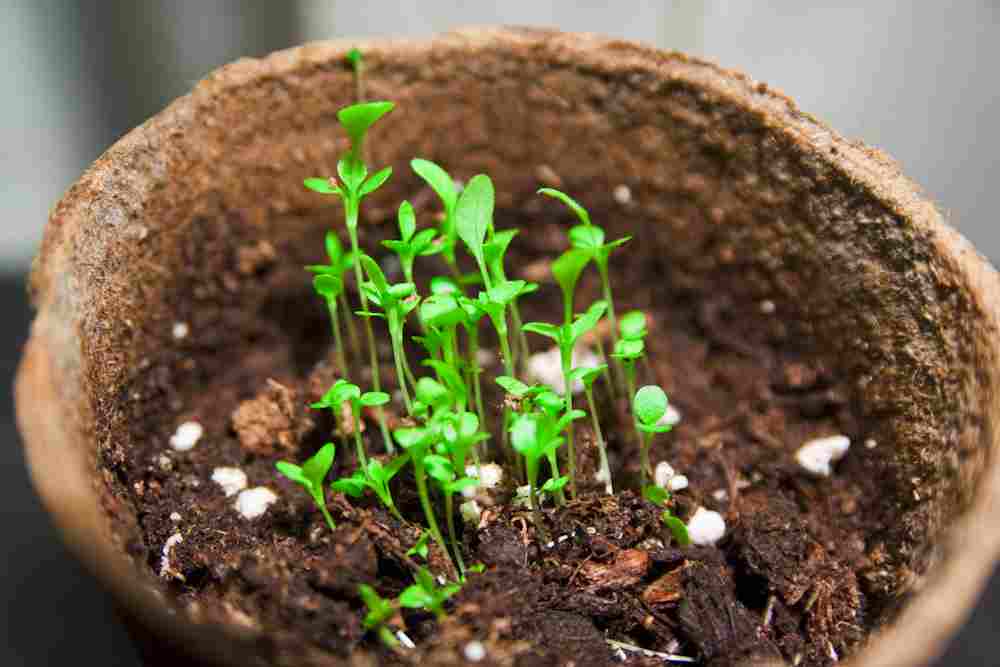
Advantages of Biodegradable pots:
- They are nature friendly.
- They make the transplanting process very easy with no root disturbance for the plants.
- You don’t have to clean the pots after use. So little or no maintenance.
- You can also use household items to create the pots.
Disadvantages of Biodegradable pots:
You can not use them multiple times. they are more for growing and transferring seedlings than to grow full-sized plants.
Conclusion:
Container gardening is one of the most popular forms of gardening. Gone are those days when a strip of land was necessary for practicing the wonderful habit called Gardening, now anybody can start their own garden if he/she has the interest to start.
And with these some of the most popular, easy-to-use, and cheap planters, you can give your home a new look altogether. The selection of the correct planter will depend on your needs and personal preferences, so it´s very useful to think things through before purchasing one.
If you are doing container planting it is a good idea to use self-watering containers. We have discussed the basics of self-watering containers in our last article. You can find it here.
I hope this post was useful to you. If you like the post, share it with others also. And Don’t Forget to PIN IT.
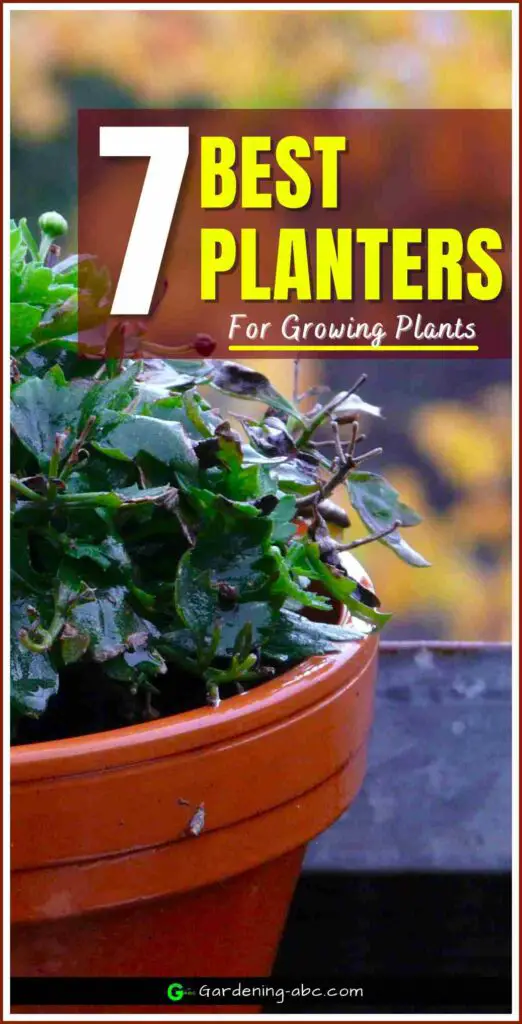
Amazon and the Amazon logo are trademarks of Amazon.com, Inc, or its affiliates.
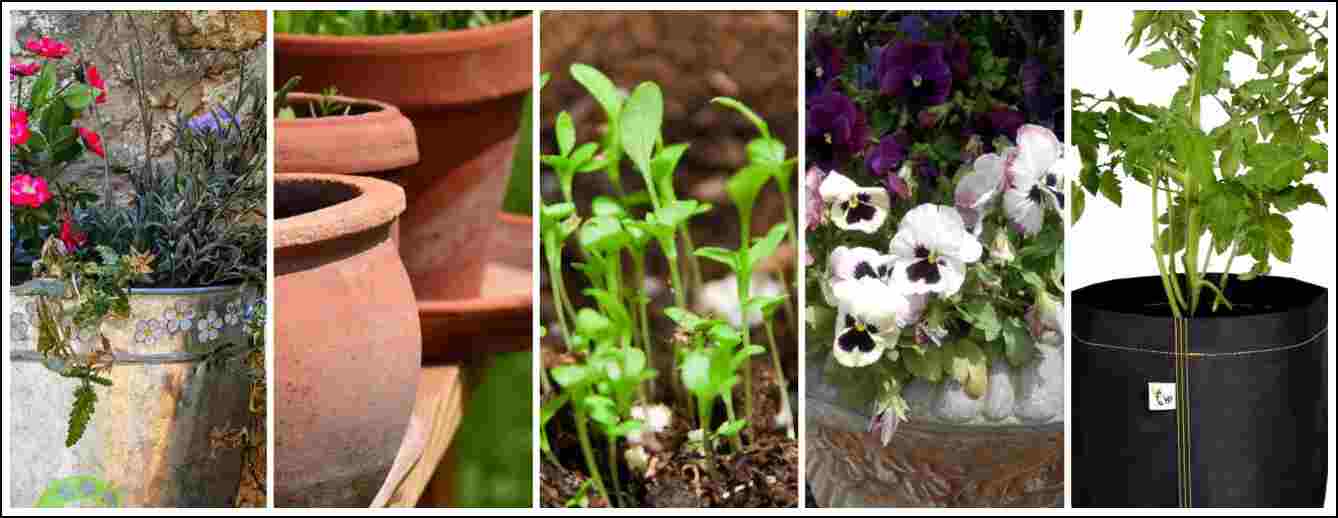
For metal pots you can use a nail and hammer to create several drainage holes in the underside of the container.
Truly enjoyed reading this article and I did not know the types of Pots were that important to be honest. Sodding Toronto
You are right but the amount of work will be far more than other containers. Also it is not very safe for the children to try. Thanks for mentioning though.
Your way to enlighten everything on this blog is actually pleasant, everyone manage to efficiently be familiar with it, Thanks a great deal.The Tree Center